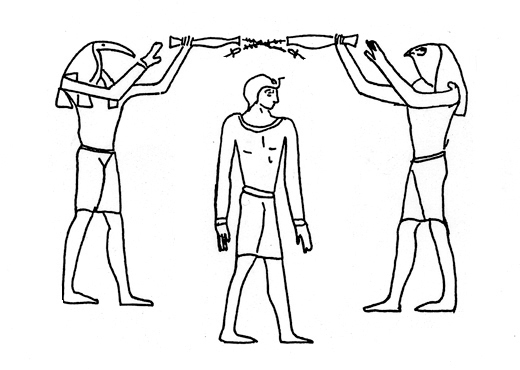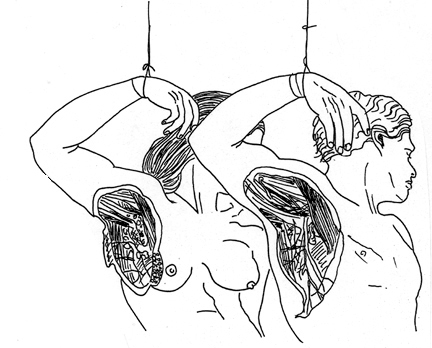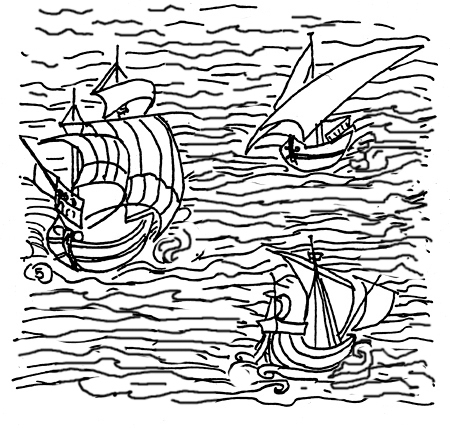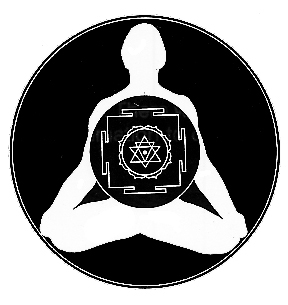 |
Text - Body Symbols - 1986-88 - © Lloyd Godman    
The
Transitory Fusion of Flesh - Lloyd Godman
The
Transitory Fusion of Flesh - Lloyd Godman
Physical constructs dictate much about our body, evolution of function
prescribes form, a secular form we all attempt to become familiar with
during our life, a form we have metamorphic perceptions of, the human
state, a body.
|
 |
During
a body's existence, environments ordain the state of its being;
the internal body, the external body. While the internal "landscape"
is fashioned by environmental events peculiar to the individual
and a "body culture" emerges, the physical state is dependent
upon a unique set of environmental circumstances, it is a paradigm
we all share; there is an inseparable "body nature" common to
all. The physical body represents an equilibrium, that sustains
life, a delicate equilibrium of organic elements arranged in a
specific pattern. |
|
Bodies
are bound objects, restricted to narrow and specific biotic ordinances, irrevocably
tethered to a confined spectrum of specific prerequisites. From the infinite
possibilities of universal amalgam they are constrained to a unique segment
of conditions needed to sustain a predetermined strain of life. Whether
by chance or design a body is confined to certain physical and organic
laws, a narrow band of life-supporting circumstances, and while this is so, they
are in constant change, any sense of physical stability is only relative. |
 |
Like
so many organic structures there are phases, phases of conception,
phases of growth, phases of replication, phases of decay and the
final phase of death. Every body has its constraints, its limitations,
and however imperious our attitudes might be, it is a fugitive structure,
it is delicate, it is dependent, it is reliant; there is an inevitability
of mortality adjutant to flesh and bone. The thread that is the
living human body has a tenuous connection with a state called life
and a sensitive relationship with an infinite range of environmental
potentials. The correlation extends beyond gender, beyond race,
beyond class, beyond age, beyond religion, beyond wealth, even beyond
being human. The body of any creature is a brittle container, a
temporary uniting of potentially unstable parts for the duration
of a life. |
|
"Death
alone discloses how insignificant are the puny bodies of men".
Juvenal
Life,
thrown together from voidal confusion, sucked from the ether of
the universal vortex, from the volatile elements that envelop
us. We, like all life, are just a part of the great activated
spiral of cosmic dust, we are but a transitory fusion of flesh
with the capacity to extend our self through the next generation
by the eclectic encoded formula of DNA that we carry. With us
on our journey we carry this encrypted formula, a complex personal
code, designated as deoxyribonucleic acid, DNA. |
|
| Or
conceivably we could determine it as a combination of the "cardinal
symbols", the ancient symbols of the old alchemists, the four
symbols of earth, air, water and fire. Combinations of these symbols
of past, present and future impermanently fused, momentarily held
fast by powerful arcane forces. What holds us together, is the
nature of our existence - organic/spiritual/ chemical/synthetic/physical/tangible/
imaginary, all of these combined; or another facet yet to be discovered? |
|
Ideas about associating
the body with these elements are not new. While the beginnings
medicine developed from the Middle Eastern cradles of civilization
where disease was thought to be inflicted by the gods and treatment
was by exorcism, "Aristotle (384-322 BC) played down the importance
of the supernatural and developed a "logical view of the human
body being composed of the four `humours', and idea that was first
proposed by the many authors of the Hippocratic Corpus of the
fifth century BC. These liquids (blood, phlegm, yellow bile and
black bile) were in balance and affected the body as a microcosm
of the world order just as earth, air fire and water affected
the world itself, the macrocosm. |
 |
fugitive existence
fugitive existence
fugitive existence
fugitive existence
fugitive existence - existence fugitive. |
"Skin
is like wax paper that holds everything in without dripping."
Art Linkletter |
The body
as a vessel, a container that holds us together, creates a certain
shape, a distinctive form: head, torso, limbs, complex integrated
convex and converse forms fashioned into a complete body, self
contained, an impervious vessel. And contained within the body
the private, the incorporeal: knowledge. Knowledge of what we
believe, of recent experience, of emotions, of intellect, residual
memories of a more distance past, nostalgia of past sensory experiences,
echos of this life, perhaps of a past life, reflexes of physical
knowledge, the psychological container of who we are, even the
container of dreams, premonitions of the future. |
|
We are walking
museums, assimilations of our physical, emotional and intellectual
experience, repositories of life's encounters, and our constructs,
attitudes and beliefs are artifacts of these engagements; experiences
fashion the individual. But we are also physical museums, with
artifacts from the ancient alchemic symbols: "Each of us is a
mobile museum. The fluid in our bodies is a perfect replica of
that ancient sea in which we grew to fruition" . Fragments
from earth, fire, air and water. Purified by water, consumed by
fire constructed from the earth returned to the soil, breathe
deep the atmosphere, breathe deep the prana, cycles materialize,
transform, mutate, regenerate, maintain, disintegrate, spiral. |
|
Furthermore
we might carry less desirable artifacts, unseen exhibits of chemical
fragments on food we eat, the water we drink, the air we breath,
the exhaust of our life style embedded in our tissue. While it
possible to deconstruct the mental constructs of the body, to
debate the issues, it's difficult to breach the organic reality
of the body. We can ignore it but we can not divorce the fundamentals,
they are inseparable, we are organic beings. For the body is also
a container of what we eat, what we drink, what we breath: solid,
liquid, gas. Like a blotter soaking, absorbing organic-chlorines,
pentachlorophenol dioxin residues, toxics build up in our cells,
vibrating DNA off course with perfidious replication. |
|
Recent
information suggests that chemical build up in the contemporary
body changes the tissue. For instance, when a corpse was cremated
thirty years ago the temperature that fire and flame consumed
it at was much less than now. The toxic chemical build up in our
cells inhibits incineration, and now they must be cremated
at a much higher temperature. We are not only the old adage
what we eat, but also what we drink and breathe we are the accumulation of toxic particles through our life-sustaining systems.
The accumulation of our replenishment and exhaust. |
|
Whatever
our belief, the dependence of our present state called life is
inextricably linked to balance; a balance sustained by certain
physical principles. With these we are physically alive, we are
fused together; without these we dissipate, we cease to exist,
die. The nature of our existence is an organic one and we can
not eradicate the organic reference. In a quotidian painless state
we may seem disconnected from our body, there might be a homogeneous
unreality, a strange contented idle where the body seems to do
nothing, where it glides, where it descends into a state of ignored
existence. For some people pleasure might disconnect this further,
but the physical body is a state we can not escape, a reality
illustrated by the point of impact, when this illusion collides
with another material object, inflicts pain or damages the body;
suddenly the body is felt, it is explicitly physical. Via twinges
of pain, euphoria, pressure, or other sensations, the mind acknowledges
the body. Through life we weave a line between pleasure and pain,
the physical feeling and the unfeeling of comfortable numbness,
where we deny the body another thought, perhaps only periodically
sensing the reality of the body and its demands. |
|
"Our
bodies are gardens, to which our wills are gardener's" Shakespeare
Orthello
The
sharing of organic resources is inevitable. Water falls as rain
on the coast of the great South American continent, and by the
time it reaches the ocean again it might have been absorbed by
a life form, evaporated and fallen to earth 5 or 8 times. Through
the living pulse of the rain forest it is sucked from the ground,
evaporated condensed and precipitated repeatedly; each entity
is part of a larger more complete eco-body. From body to body
the single life form that uses this resource is not predestined,
it does not stand alone, there is no reservation, only a sharing;
the water I drink today could quench your thirst in the future.
Not only are we the gardeners, we are part of the garden. In a
similar manner, air moves unseen around the planet, your breath
exhaled, and then replenished can be my prana in another time,
the same breath shared by the poverty-stricken, the complacent
and kings. The body's existence on earth relates to a comprehensive
planetary cycle.
|
|
To understand
the essence of life, science attempts to probe every inch of the
body, every infinitesimal detail, ever closer through macro view
after micro view, electron microscopic realities, fibre optic
probes, the whole broken down into smaller and smaller components,
organs into sections, sections right down to single cells, nuclei.
Relationships of one to another studied at depth. Answers lie
in ever smaller microcosms. Much understanding and progress has
been made on how the body works; through research and application,
lives have been saved, extended by this science, remarkable methods
have been devised to extend the life of the body. And yet obvious
and seemingly cardinal secrets are ignored or elude us. We reject
the larger body, the earth body the planet. |
|
However
antediluvian the alchemists symbols may appear to us in
this age of quantitive chemistry, the defined, the specific, DNA,
they can still function as effective symbols, as the essence of
our physical being. In fundamental terms, we are no more than
these four basic elements EARTH, AIR, WATER, FIRE. We need the
right components of earth's elements to grow, to survive, the
wrong ones and we are poisoned, the body withers and dies. EARTH
is the great fertility symbol; it provides stability, a gravity,
it is hard, it is an anchoring device. AIR is transparent, ethereal,
light, it is the exchange of gases that we breath and recirculate
with the planet's vegetation. WATER is the eternal liquid, the
great purifier, a most essential exchanger of life. And FIRE is
the sensitive warmth of the sun, the element that causes other
effects or the consuming transitory flame that hastens exchange.
Splinters of all these four elements exist in all of us. Nothing
lives with autonomous self-reliance; interdependence prevails. |
|
Exchange
exchange
rearrange
exchange
element
after
element
exchange
rearrange
"a
faultless body and a blamless mind" Homer Odyssey |
|
But there
is a culture who acknowledge their body, a culture "in tune" with
their body, a culture where mind is directed less to other aspects
of the world outside and more to the body; there is a culture
where the body replaces life itself; there is a culture of body
consciousness. For the fitness fraternity or beauty clique the
body becomes an obsession; their focal point is how bodies look,
how they perform. Their cerebral and physical energies are focused
on the body beautiful and its performance. They become aware of
the body, how bodies are honed to physical perfection, how muscles
are toned, trained, made taut, relaxed, how to reach peak physicality,
or through dieting, the extremeness of eating disorders and surgery,
how to become slim and trim, how features can be idealized, how
breasts can be enlarged, reduced, how noses can be shortened etc,
to attract the `gaze', how to become the body beautiful, and their
life revolves around activities to maintain, improve and admire,
(or have others admire) their body. Utopian curves, skin colour
and texture enhanced, muscle shape intensified by natural means
and artificial. |
|
And, perhaps,
not as physically "in tune" with the body, but equally as
focused are the critics of this body culture, those who understand
and discuss the history and tradition, the mental conditioning,
the gender disparity, the positions of power, the site of the
voyeur, the unobtainable expectations on unexceptional bodies.
The commentators who challenge established attitudes and demand
progressive change. "The beauty myth tells a story: The quality
called "beauty" objectively and universally exists. Women must
want to embody it and men must want to possess women who embody
it". |
|
The power
of the human mind is a extraordinary thing. If the mind is of
a predetermined persuasion; perhaps focused on sexual references,
gender issues, the erotic, the pornographic, if it is trained
to detect the delicatest nuances in any image of the body that
relate to a predestined belief, if it has the opportunity to subvert
an image to its own end, then it will do so. If one has a fixation
on a particular issue, any image of the body, or signifier has
the potential to represent what ever position one chooses. As
Linda Wilson puts it, "Eroticism will always be the good sexual
experiences that I like while pornography will always be the bad
sexual experiences that you like". We each investigate to
reaffirm our own position, reject another. |
|
| In any sense, this extreme
body culture contrasts dramatically with the detached, unconscious,
the relaxed, disregarded attitudes that many people have as they
"chug" through life, having given up on their own body attaining
any semblance of the "ideal" and now allocating little regard
for their body at all. "If
anything is sacred the human body is sacred" Walt Whitman |
|
But
there is a disparate body awareness, `another way of telling'.
"To feel and experience your own body or its form is a fundamental
and natural basis for different methods and therapies. As in
Yoga and Kirtan it often has to do with moving, bending and
stretching the body in different poses, and also with becoming
more conscious of how the body normally moves, or, by free movements
and dance, breaking your usual patterns of moving. You establish
a new contact and familiarize yourself with your body.
|
|
But
to meditate on it, as an immobile object that you fill up from
the inside with your awareness till you become one with your
body all at once, this is the basis for one of the most profound
methods: to experience your own essence, your innermost being,
`your true form'-swarupa The
body, a temple, something physical to be treasured. A spiritual
house, a vehicle to propel other aspects of our existence. The
body a special circumstance, organic matter held from disintegration
for the period of a life, to be personally accepted, acknowledged
by any individual, not for what it might be but for what it
is to them. Not necessarily flaunted or idolized, but explored,
developed for what it can be. |
|
"Man,
for many philosophers both ancient and modern, is the `representational
animal', homo symbolicum, the creature whose distinctive character
is the creation and manipulation of signs- things that `stand
for' or take the place of' something else".
Representation
of the human likeness and particularly the body are old, they
date back to the emergence of civilization itself. For instance,
a little lime stone figure found at Willendorf in Austria dated
at c.30,000-25,000 b.c. is regarded as one of these earliest
works. The rounded figure is unmistakenly female and appears
to have been carved as an image of fertility. The carving reveals
a consciousness of the body; the parts and proportions point
to the unmistakable human form. Whether it was a general
representation or a specific one, we shall never know, but it
references "a body" in a much more permanent manner than the
physical nature of its maker and the bodies of other people
from this time. It has survived time in a way that the flesh
and substance of the generation could not. There are other examples
of representations of the body from this period like the Man
from Brno, but one of the characteristics of work from this
period is that they are "visualized, not conceptualized,; that
is to say that, unlike children's drawings and other so called
`primitive' attempts at visual representation, they are based
on what the eye sees and not what the mind knows"
|
|
In a
later time, civilizations became preoccupied with the preservation
of the body the Egyptian being the most widely populized.
For some cultures, the focus of life became the celebration
and commemoration of death and entry into the after world.
Great energy and resources were summoned to build crypts,
mummify and enshrine the corpse in a carved sarcophagus fashioned
to a human likeness and inlaid with precious material, and
prepare for an anticipated means in the world beyond. Ceremony
and artifact replaced life itself. There was an attempt for
the body to be placed in suspended animation to defy the elemental
cycle. |
|
In our
age we see life and representations of the body differently,
the invention of photography changed the way people see bodies
and now the dominant representation has shifted to the photographic
image. "For the first time new technologies could reproduce
- in fashion plates, daguerreotypes, tintypes, and rotogravures-
images of how women should look. In the 1840s the first
nude photographs of prostitutes were taken; advertisements
using images of "beautiful" women first appeared in the mid-century".
One hundred and fifty years after the invention of the photograph,
realistic photographic representation of the body is something
we all know, something we each have to deal with; most often
exploited, it is presented as a surrogate, often it is presented
with an erotic rationale, it is meant to be provocative, to
be pornographic, to be voyeuristic, to assert or confirm
power. From this perspective any image of thebody can provide
a multiplicity of reading that the maker or model have inadequate
control over, but there are other less conspicuous potentials. |
|
An
adequate narrative read along side images of the body can
suggest another context, the text can act as a precursor to
indicate the photographers intention, provide an entry point,
and while it will always be subjected to various interpretations
and ultimate subversion from the original intent based on
past histories and experiences, it is a domain where the potential
discoveries of the investigation out weighs the risk of a
subverted reading.Through
the ambiguous abstraction of confusing shadows of light and
dark, the photograph can create different references, elemental
references. Create a visual ecology of the body, a sense of
beauty tangential to the erotic to sexual references, can
create echoes of the elements of where we came, where we are
and a future facility. |
|
Body
marks sketched across the darkness leave abstract indentations,
indications, motifs that imply something else, perhaps representations
of essential elements, quintessential elements air, earth
fire and water. Repetitive motifs linked, juxtapositions,
side by side, above and below, diagonally opposed with elusive
subtle changes, twists of shape form tone texture, mutate
from image to image. Each image juxtaposed in a stanza-like
pattern as the body converts to a visual poetry of infinite
form cut from blackness, reliefed segments of light advance
forward while others drop back, quiver, dissolve. A visual
cadence, pulses of light in the darkness frozen but somehow
dancing, alive. |
|
Dissident
opposites conflict to create incomplete human structures,
not decapitated or mutilated, but metamorphosed, new bodies
emerge, enigmatic bodies; the mind requires sense from them,
like indiscriminate ink patterns, splattered on a white paper.
Visual contortion, encrypted marks in the void of darkness,
life over dark floating, floating weightless. Lines, shapes,
marks, textures, drifting, drifting in the darkness of photographic
time. Secured, suspended in the emulsion. A new visual architecture
of the body evolves. |
|
Obscured
by the taking, the body coalesces with the void of the black
background, a new meaning emerges, creates its own signifiers,
through image it manifests its own reference points. Albatross
dances where form folds in on itself, doubles back and projects
out-wards, bends back into the shadows, where areas flicker
forward like white hot flame against dark nights, unextinguished,
or concurrently hangs like an etherial mist and dissipates
into the blackness. A garment of the symbols, it represents,
flesh melts into life-giving references, expanses rush like
water; rain drops, become streams, great rivers with raven
embankments. Black backgrounds become voids, voids become
solid dense weights, black silhouettes. Turned upside down
voids transcend into earth bodies, great shapes delineated
by the fugitive illuminations of a human body that hang above
as cirrus, cumulus, nimbus, stratus. Visual paradox prevails,
ambiguity disguises the body, suddenly it has no substance.
Through this reversal, visual gravity vanishes, weightless
they float, or rotate into vertical fingers of flame,
ignite into suggestions of another force. |
 |
Mortality
of the body, immortality of the image, the photograph represents
a collusion of the two. There is a suspended immortality through
the image, through the photograph a representation can survive
many more generations than the life of the body. A body can
survive past the physical limitations of the elemental aspects
of its being. `They
are images of the "naked nude" - both factual and genuine
and yet much more than mere records of the nude body. Their
newly found authenticity is due in equal part to the skill
of modern photographers and to the cooperation of their sitters
- no longer on the defensive when undressed' |
|
| Any
photograph of a body assumes a relationship between photographer,
model and audience. Although the audience is a factor that
can not be ignored, the relationship of photographer and model
can presume trust, distrust, confrontation, equanimity, or
can be sanctioned, unsanctioned. Without question, the model
is vulnerable, exposed to the attitudes of the photographer,
the lens, the film and ultimately an audience. While the power
relationship is unequal, and can never be balanced, does the
photographer have a responsibility, and if so, what is that
responsibility? In an inappropriate relationship the results
can be destructive, the wrong message conveyed; the image
used against the model's will, can be used for a subverted
and undisclosed purpose. But for the model and photographer
the experience can become an empowering positive journey of
discovery, where each learns about their relationship with
the body, where the model clearly understands the intent of
the photographer, where issues are discussed before, during
and after the event, where there is consultation, a sharing.
A relationship where over time the photographs unveil a new
validity about the body, it transforms becomes something else.
At the time the images are taken it can be natural for the
model to feel approving of the relationship, but perhaps a
sincere test is how the model feels in retrospect about this
relationship. How do they feel about the event and results
more than ten years later. |
|
However
Dead or alive we are, however overcome by technology
we become we cannot escape images of......
Body.
1a The entire material structure and substance of an organism,
especially of a human being or an animal.
b.
A corpse or carcass
2.a.
The trunk or torso of a human being or animal
2.b.
Part of a garment covering the torso.
2.b.
Part of a garment covering the torso.
3.law.a.
a person
3.b.
A group
become
conscious, aware of the body before it forgets one
|
|
|